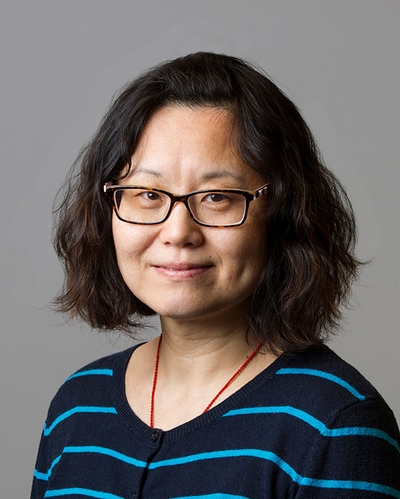
Rose R. Yang, Ph.D., M.P.H.
Senior Investigator
Integrative Tumor Epidemiology Branch
NCI/DCEG
Research Topics
Dr. Rose Yang's research focuses primarily on the etiology and molecular heterogeneity of breast cancer, in addition to the genetics of chordoma and familial cutaneous malignant melanoma/dysplastic nevi syndrome.
Etiology and Molecular Heterogeneity of Breast Cancer
Dr. Yang characterizes the molecular profiles of tumors and tumor microenvironment (TME) using integrated tumor profiling analysis to identify risk factors for specific cancer subtypes. She also examines risk factor heterogeneity by subtype and investigates biological differences underlying that heterogeneity. In prior work, Dr. Yang and her colleagues found that the unique early age-onset of breast cancer found among Asian women is mostly driven by the period and cohort effect. She is currently leading breast cancer studies in Asian and African populations to identify distinct molecular alterations in tumors, adjacent normal tissues, and TME, and to examine the associations of these molecular changes with genetic and environmental risk factors, breast tissue composition and density, and breast cancer subtypes.
Germline Susceptibility and Somatic Genomic Landscape of Chordoma
In her earlier research, Dr. Yang identified the first major susceptibility gene for familial chordoma, a rare bone cancer that arises from notochord remnants. Using whole-genome sequencing, Dr. Yang and her colleagues conducted the first and largest genomic analysis of skull-base chordoma to date and described a comprehensive somatic landscape of this rare cancer. She is now seeking to identify novel germline susceptibility genes and to expand somatic omics studies to improve molecular classification of chordoma for the development of targeted treatments.
Gene Identification of Familial Melanoma
Dr. Yang employs cutting-edge genomic technologies and novel statistical approaches to identify susceptibility genes in familial melanoma. Most recently, Dr. Yang and her colleagues applied protein-protein interaction and gene co-expression network analysis approaches to prioritize candidate genes identified from whole-exome sequencing analysis of cutaneous melanoma patients from melanoma-prone families and identified several new candidate melanoma susceptibility genes.
Biography
Dr. Yang received a Ph.D. in physiology from the Lombardi Cancer Center, Georgetown University in 1999 and an M.P.H. in epidemiology from the Johns Hopkins Bloomberg School of Public Health in 2003. She joined the Genetic Epidemiology Branch (GEB) in 2000 as a postdoctoral fellow, became a tenure-track investigator in 2006, and was appointed senior investigator upon receiving NIH scientific tenure in 2014. She received NCI Director’s Intramural Innovation Awards in 2007 and 2009. Dr. Yang serves on the editorial board for Cancer Epidemiology, Biomarkers & Prevention, and is an adjunct associate professor at the Chinese University of Hong Kong.
Selected Publications
- Bai J, Shi J, Li C, Wang S, Zhang T, Hua X, Zhu B, Koka H, Wu HH, Song L, Wang D, Wang M, Zhou W, Ballew BJ, Zhu B, Hicks B, Mirabello L, Parry DM, Zhai Y, Li M, Du J, Wang J, Zhang S, Liu Q, Zhao P, Gui S, Goldstein AM, Zhang Y, Yang XR. Whole genome sequencing of skull-base chordoma reveals genomic alterations associated with recurrence and chordoma-specific survival. Nat Commun. 2021;12(1):757.
- Sung H, Rosenberg PS, Chen WQ, Hartman M, Lim WY, Chia KS, Wai-Kong Mang O, Chiang CJ, Kang D, Ngan RK, Tse LA, Anderson WF, Yang XR. Female breast cancer incidence among Asian and Western populations: more similar than expected. J Natl Cancer Inst. 2015;107(7).
- Goldstein AM, Xiao Y, Sampson J, Zhu B, Rotunno M, Bennett H, Wen Y, Jones K, Vogt A, Burdette L, Luo W, Zhu B, Yeager M, Hicks B, Han J, De Vivo I, Koutros S, Andreotti G, Beane-Freeman L, Purdue M, Freedman ND, Chanock SJ, Tucker MA, Yang XR. Rare germline variants in known melanoma susceptibility genes in familial melanoma. Hum Mol Genet. 2017;26(24):4886-4895.
- Shi J, Yang XR, Ballew B, Rotunno M, Calista D, Fargnoli MC, Ghiorzo P, Bressac-de Paillerets B, Nagore E, Avril MF, Caporaso NE, McMaster ML, Cullen M, Wang Z, Zhang X, NCI DCEG Cancer Sequencing Working Group., NCI DCEG Cancer Genomics Research Laboratory., French Familial Melanoma Study Group., Bruno W, Pastorino L, Queirolo P, Banuls-Roca J, Garcia-Casado Z, Vaysse A, Mohamdi H, Riazalhosseini Y, Foglio M, Jouenne F, Hua X, Hyland PL, Yin J, Vallabhaneni H, Chai W, Minghetti P, Pellegrini C, Ravichandran S, Eggermont A, Lathrop M, Peris K, Scarra GB, Landi G, Savage SA, Sampson JN, He J, Yeager M, Goldin LR, Demenais F, Chanock SJ, Tucker MA, Goldstein AM, Liu Y, Landi MT. Rare missense variants in POT1 predispose to familial cutaneous malignant melanoma. Nat Genet. 2014;46(5):482-6.
- Zhu B, Tse LA, Wang D, Koka H, Zhang T, Abubakar M, Lee P, Wang F, Wu C, Tsang KH, Chan WC, Law SH, Li M, Li W, Wu S, Liu Z, Huang B, Zhang H, Tang E, Kan Z, Lee S, Park YH, Nam SJ, Wang M, Sun X, Jones K, Zhu B, Hutchinson A, Hicks B, Prokunina-Olsson L, Shi J, Garcia-Closas M, Chanock S, Yang XR. Immune gene expression profiling reveals heterogeneity in luminal breast tumors. Breast Cancer Res. 2019;21(1):147.
Related Scientific Focus Areas
This page was last updated on Thursday, July 24, 2025

